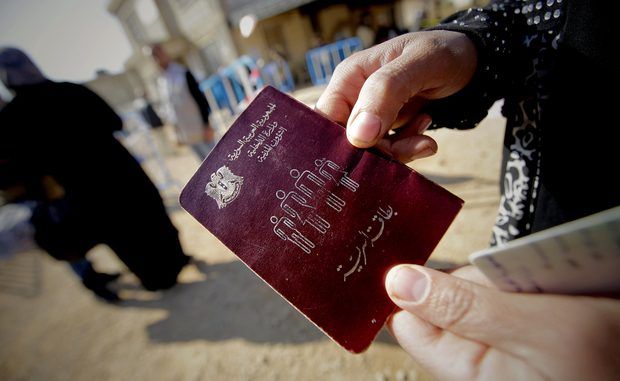
It has been revealed that a Syrian passport was found near or on the body of one of the terrorist suicide bombers in Paris.
The man had apparently travelled via the refuge trail through the Balkans to Paris. The passport discovery raises more questions than answers because of the trade that goes on in forged Syrian travel documents. The suicide bomber may either acquired the passport from someone else to get through Greece and Serbia, or obtained it before the attacks in Paris. In either case it could be a forgery.
The Guardian reports:

BYPASS THE CENSORS
Sign up to get unfiltered news delivered straight to your inbox.
You can unsubscribe any time. By subscribing you agree to our Terms of Use
On 3 October, a man using the name Ahmed Almohamed arrived on the small Greek island of Leros and registered as a refugee with the Syrian passport.
The traveller apparently crossed to a neighbouring island and there boarded a ferry to Athens on 5 October, buying a ticket together with one other man, travel receipts published by the Greek newspaper Protothema show.
Within two days he had apparently passed through northern Greece to Macedonia and reached the border crossing with Serbia.
“One of the suspected terrorists, A.A., who is of interest to the French security agencies, was registered on the Presevo border crossing on October 7 this year, where he formally sought asylum,” the Serbian interior ministry said in a statement.
The Serbian newspaper Blic published a photo of the passport, with the details clearly visible, showing that the holder was a 25-year-old man from Idlib in north-east Syria, which fell to rebels in September.
The document’s discovery amid the bloodied aftermath of multiple bombings at the Stade de France was seized on by opponents of Europe’s refugee resettlement scheme as an urgent argument in favour of tighter border controls.
French authorities have yet to say whether they have managed to match fingerprints to those registered along with the passport in Greece. Even if that link were eventually made, it would not confirm either the man’s identity or nationality, as there is a thriving trade in fake or altered Syrian passports.
Syrians have also reported losing their documents in muggings or scams during the arduous trek across Europe, so the passport could potentially have arrived in Greece with one man and in Paris with another.
Fingerprints stored in the registration network by European countries trying to monitor the flow of migrants and refugees may hold the clue to confirming who was travelling on the passport as it was brought westwards.
If it was still with the same person, he most likely travelled north and east from Serbia to Croatia – because Hungary had by then shut its border with Serbia – and then to Austria via Slovenia or a different Hungarian border.
Their passage would have been smoothed by the governments of several Balkan and south European countries, which had decided to help people pass through as swiftly as possible on their way to countries farther north and west.
Any trail of registration or fingerprints would probably end in Germany or Austria, where most refugees request to stay or from where they try to slip away to other countries in which they have relatives or friends staying unofficially.


